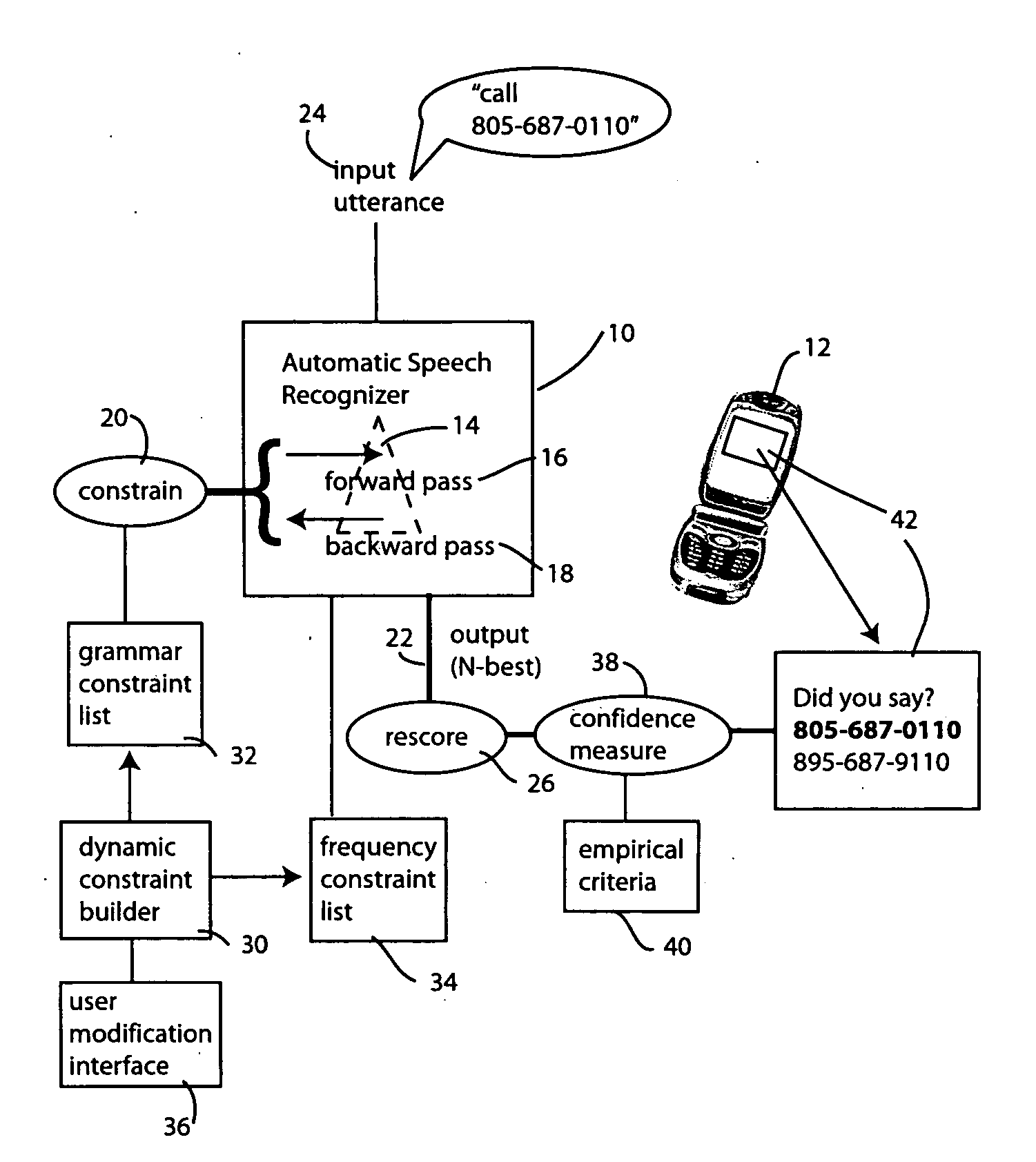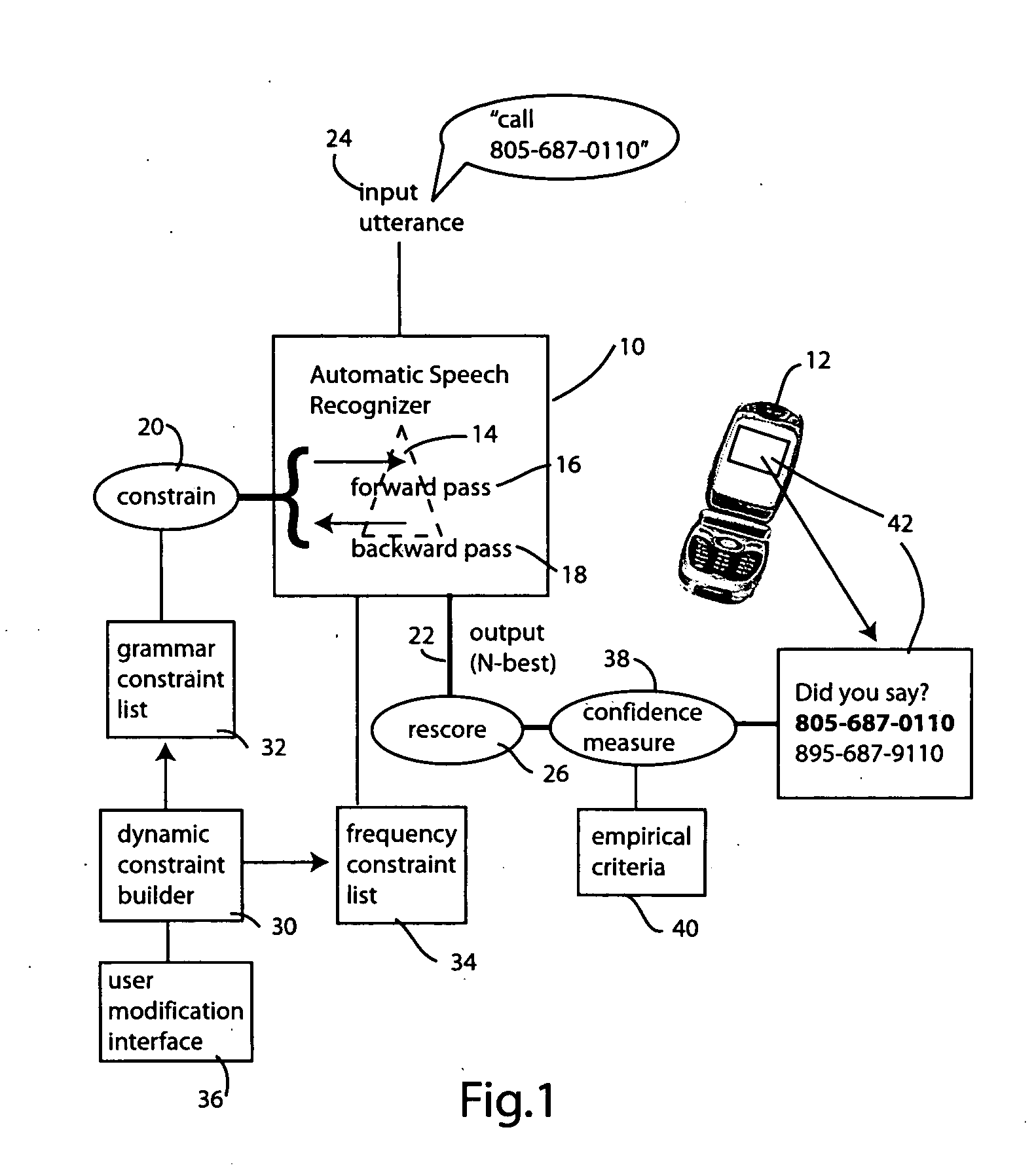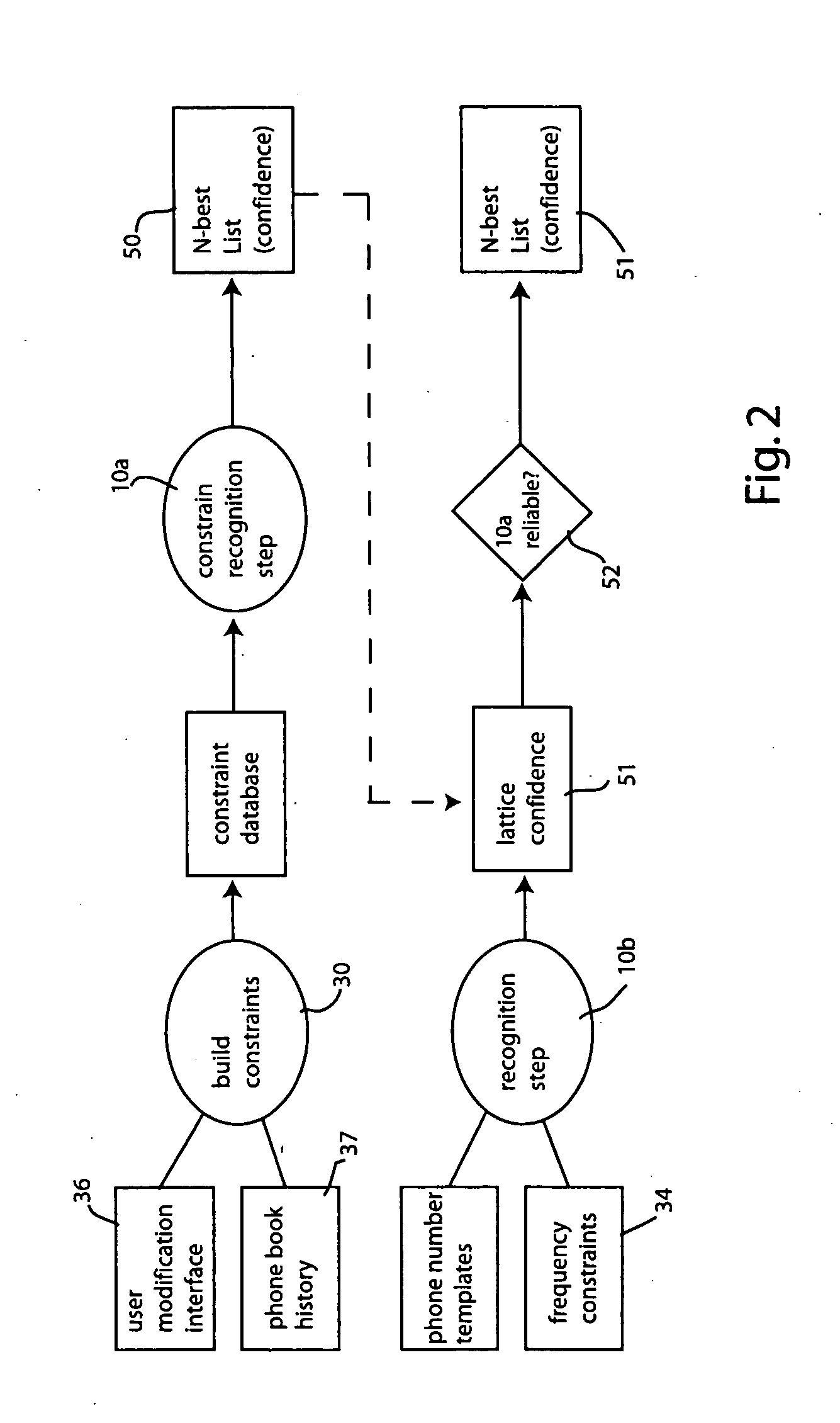Hands-free voice dialing for portable and remote devices
- Summary
- Abstract
- Description
- Claims
- Application Information
AI Technical Summary
Benefits of technology
Problems solved by technology
Method used
Image
Examples
Embodiment Construction
[0015] The following description of the preferred embodiment(s) is merely exemplary in nature and is in no way intended to limit the invention, its application, or uses.
[0016] Referring to FIG. 1, the recognition system includes an automatic speech recognizer 10. The recognizer 10 may be embedded in a portable device such as cellular telephone 12. Alternatively, the recognizer 10 may be deployed on another system that the user communicates with by suitable means, such as by cellular telephone 12. As will be more fully explained below in connection with FIG. 2, the recognizer 10 may be conceptually viewed as two recognizers, operating in parallel or in series, each performing a different assigned function (one recognizer being tightly constrained and one being loosely constrained).
[0017] In the illustrated embodiment, the automatic speech recognizer 10 employs a decoding lattice that may be searched to produce an N-based hypothesis corresponding to a user's input utterance. In the ...
PUM
 Login to View More
Login to View More Abstract
Description
Claims
Application Information
 Login to View More
Login to View More - R&D
- Intellectual Property
- Life Sciences
- Materials
- Tech Scout
- Unparalleled Data Quality
- Higher Quality Content
- 60% Fewer Hallucinations
Browse by: Latest US Patents, China's latest patents, Technical Efficacy Thesaurus, Application Domain, Technology Topic, Popular Technical Reports.
© 2025 PatSnap. All rights reserved.Legal|Privacy policy|Modern Slavery Act Transparency Statement|Sitemap|About US| Contact US: help@patsnap.com



